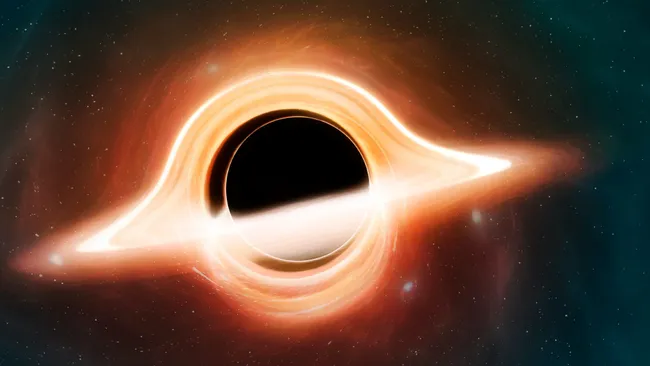The Universe is growing. And not just at a steady pace—it’s expanding faster and faster. For decades, scientists have struggled to understand the mysterious force behind this accelerated expansion, often attributing it to something called dark energy. Now, however, new research suggests that black holes, those enigmatic cosmic giants, could be contributing to this growth in a way we hadn’t imagined.
The Role of Dark Energy and Cosmic Expansion
The expansion of the Universe is no new discovery, but the fact that it’s speeding up? That’s the puzzling part. According to traditional physics, gravitational forces should be slowing down cosmic expansion over time. Yet, our measurements reveal the opposite. This led scientists to hypothesize the existence of “dark energy,” an invisible force that makes up roughly 70% of the Universe. Dark energy is believed to counteract gravity, pushing galaxies farther and farther apart. But while dark energy has been instrumental in explaining acceleration, no one truly knows what it is—until, perhaps, now.
Recent findings point to black holes as potential sources of dark energy. These discoveries challenge previous assumptions and suggest that dark energy may not be a mysterious particle but rather a consequence of “cosmological coupling” within black holes.
The Theory of Cosmological Coupling
The concept of cosmological coupling is groundbreaking. Imagine the expansion of the Universe being directly connected to the growth of black holes. This means that as the Universe expands, so do black holes—suggesting an intimate link between these dense matter concentrations and the cosmic landscape around them. According to this theory, black holes don’t just consume matter; they grow in sync with the Universe’s expansion.
Kevin Croker, an astrophysicist from Arizona State University, explains that “if black holes contain dark energy, they can couple to and grow with the expanding Universe, causing its growth to accelerate.” The math behind this coupling suggests that black holes could be more than just cosmic endpoints for stars; they might be engines driving the expansion of the Universe.
Evidence: Growth of Black Holes in “Dead” Galaxies
One of the first pieces of evidence for cosmological coupling came from studying supermassive black holes within “dead” galaxies. These galaxies no longer produce stars, and their black holes are starved of fuel. Under normal conditions, black holes in such galaxies should stop growing once their host galaxies run out of resources. However, scientists found that these black holes were still expanding, and the increase could not be attributed to any known growth mechanism. This surprising observation supports the idea that black holes could grow in ways unrelated to nearby material consumption—possibly through coupling with the Universe’s expansion.
The Birth of Black Holes and Dark Energy
The cosmological coupling theory also provides insights into how black holes might be connected to dark energy right from their formation. As massive stars reach the end of their life cycles, they undergo gravitational collapse, forming black holes. Researchers suggest that during this collapse, normal matter might be converted into dark energy within black holes. This transformation could add dark energy to the Universe, supporting the theory that black holes contribute directly to cosmic expansion.
Astrophysicist Duncan Farrah from the University of Hawai’i notes, “The two phenomena were consistent with each other – as new black holes were made in the deaths of massive stars, the amount of dark energy in the Universe increased in the right way.” This connection, if verified, could help explain why black holes seem to influence the Universe on such an immense scale.
Implications for the Missing Matter Problem
This theory also presents an elegant solution to the “missing matter” problem in the Universe. According to existing models, a substantial amount of “normal matter” is unaccounted for. Cosmological coupling offers a possible explanation: as black holes form and grow, they convert some of this missing matter into dark energy, leaving it “missing” in conventional observations but actually present as part of the Universe’s overall energy-matter makeup.
This dark energy conversion aligns with measurements of cosmic expansion, providing a coherent explanation for both the missing matter and the accelerating growth of the Universe.
What’s Next? Future Research and Implications
While the theory is enticing, it’s still in its early stages. To transform it from an intriguing idea into accepted science, more observational data and experiments are needed. Croker, Farrah, and their teams are now looking to test their predictions with more powerful telescopes and instruments, aiming to observe these processes in action. As Tarlé, a physicist at the University of Michigan, puts it, “This is an experimental question now.”
New tools such as the Dark Energy Spectroscopic Instrument (DESI) and upcoming space telescopes will enable scientists to gather more precise data on black hole growth rates, cosmic expansion, and dark energy’s role in the process. If the data continues to support cosmological coupling, we might soon have a much clearer picture of the Universe’s fate.
Conclusion: A New Perspective on the Universe’s Fate
The idea that black holes could be driving the Universe’s expansion is both thrilling and daunting. It redefines what black holes are and how they interact with the cosmos, positioning them as central players in the Universe’s long-term story. If this theory is validated, black holes would no longer be mere endpoints for stars—they’d be engines of expansion, powering the cosmos’ growth from within.
Reference:
Croker, K. S., Tarlé, G., Ahlen, S. P., Cartwright, B. G., Farrah, D., Fernandez, N., & Windhorst, R. A. (2024). DESI dark energy time evolution is recovered by cosmologically coupled black holes. Journal of Cosmology and Astroparticle Physics.



















